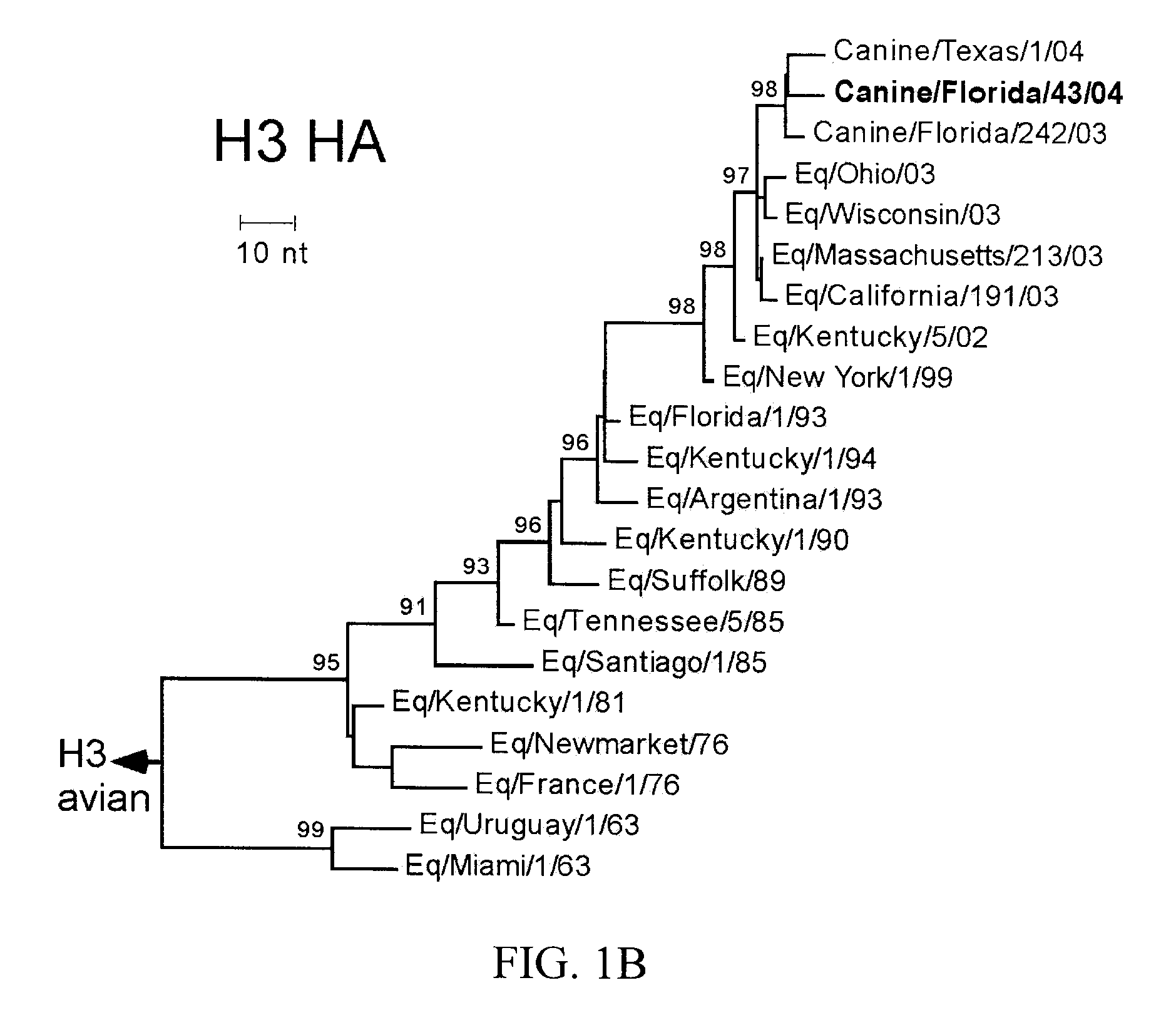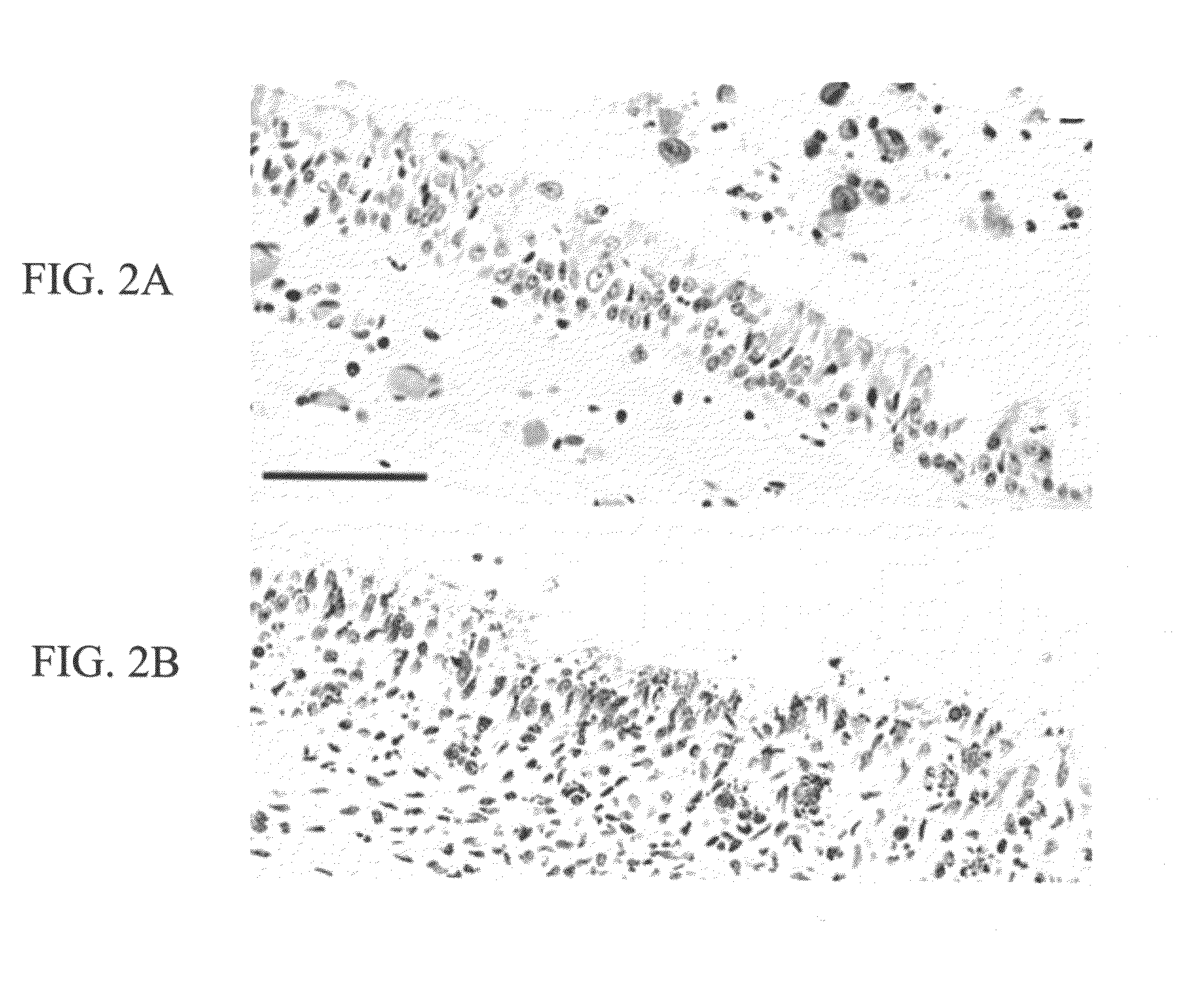Materials and methods for respiratory disease control in canines
a technology of respiratory disease and canine body, applied in the field of canine respiratory disease control materials and methods, can solve the problems of preventing, suppressing, or eradicating an influenza virus infection, preventing, reducing the risk of, and preventing the onset of respiratory lesions. , the effect of suppressing, ameliorating or eradicating the infection
- Summary
- Abstract
- Description
- Claims
- Application Information
AI Technical Summary
Benefits of technology
Problems solved by technology
Method used
Image
Examples
example 1
[0239]In January 2004, an outbreak of respiratory disease occurred in 22 racing greyhounds housed in 2 kennels at a Florida track and the local farm that supplied dogs to these kennels. There were approximately 60 dogs in each kennel building and 300 dogs at the farm. The outbreak occurred over a 6-day period after which no new cases were identified. Fourteen of the 22 dogs had fevers of 39.5 to 41.5° C., a soft, gagging cough for 10 to 14 days, and eventual recovery. Of the remaining 8 dogs, 6 apparently healthy dogs died unexpectedly with hemorrhage from the mouth and nose. Two other dogs were euthanatized within 24 hours of onset of hemorrhage from the mouth and nose due to rapid deterioration. Both of these dogs had fevers of 41° C. Four of the 8 deaths occurred in the kennel buildings and 4 occurred at the farm. Fifty percent of the deaths occurred on day 3 of the outbreak. The 22 dogs ranged in age from 17 months to 4 years, but 73% were 17 to 33 months old.
[0240]Two clinical ...
example 2
[0241]To investigate the role of the Canine / FL / 04 virus in the clinical and pathological observations in the greyhounds, we performed immunohistochemical staining (IHC) on lung tissues using a monoclonal antibody to influenza A H3. Viral H3 antigen was consistently detected in the cytoplasm of bronchial and bronchiolar epithelial cells, bronchial gland epithelial cells, and macrophages in airway lumens and alveolar spaces (FIG. 2A). These data support a diagnosis of pulmonary infection with influenza virus of the H3 subtype in multiple dogs.
example 3
[0242]To determine involvement of a Canine / FL / 04-like virus in the etiology of the respiratory disease outbreak, we analyzed paired acute and convalescent sera from 11 sick dogs and 16 asymptomatic contacts by hemagglutination inhibition (HI) and microneutralization (MN). Seroconversion, defined as a ≧4-fold rise in antibody titer to Canine / FL / 04 from the acute to convalescent phase, occurred in 8 of 11 (73%) sick dogs in both assays (Table 1). Seroconversion occurred in 6 of 16 (38%) asymptomatic contacts in the HI assay, while 8 of 16 (50%) seroconverted in the MN assay (Table 1). The seroconversion data demonstrated infection of the dogs with a Canine / FL / 04-like virus which coincided temporally with the onset of respiratory disease in most animals.
[0243]Single serum samples were collected 3 months after the outbreak from an additional 46 asymptomatic dogs housed with the sick dogs. Of these, 43 (93%) were seropositive in both assays. For the total population of 73 dogs tested, 93...
PUM
| Property | Measurement | Unit |
|---|---|---|
| composition | aaaaa | aaaaa |
| nucleic acid | aaaaa | aaaaa |
| compositions | aaaaa | aaaaa |
Abstract
Description
Claims
Application Information
 Login to View More
Login to View More - R&D
- Intellectual Property
- Life Sciences
- Materials
- Tech Scout
- Unparalleled Data Quality
- Higher Quality Content
- 60% Fewer Hallucinations
Browse by: Latest US Patents, China's latest patents, Technical Efficacy Thesaurus, Application Domain, Technology Topic, Popular Technical Reports.
© 2025 PatSnap. All rights reserved.Legal|Privacy policy|Modern Slavery Act Transparency Statement|Sitemap|About US| Contact US: help@patsnap.com



